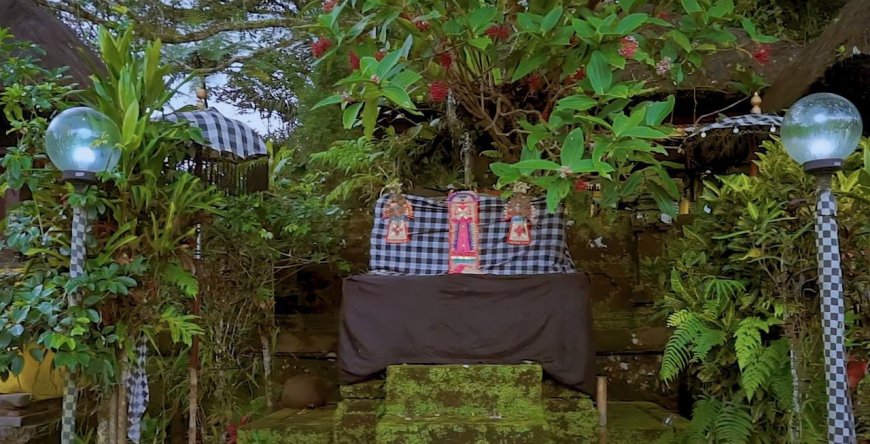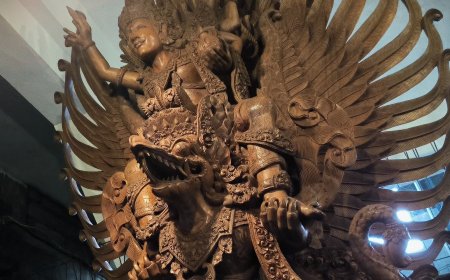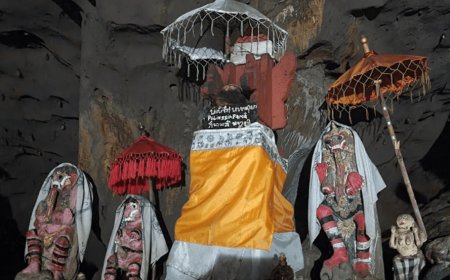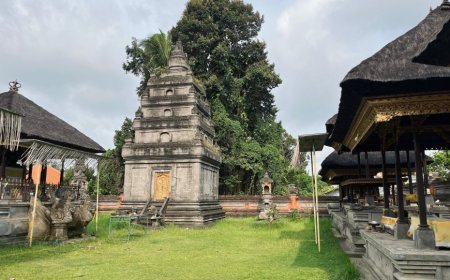Luhur Pucak Petali Temple: Sacred Place to Seeking for Justice
Luhur Pucak Petali Temple is a sacred place in Bali with a deep history and legends. Built in 1272 AD, the temple is the result of the hard work of Bhagawan Rsi Canggu and Arya Wangbang. Besides serving as a place of worship, Petali Temple also functions as a center for teaching religious literature. It radiates ancient wisdom, guiding the community towards justice, peace, and spiritual harmony in their journey.

Luhur Pucak Petali Temple (Source: Pujangga Nagari Nusantara's Channel)
Luhur Pucak Petali Temple is an enchanting sacred place located in the Penebel District, Tabanan Regency, Bali, steeped in deep history and fascinating legends. It is believed to be one of the marvels of architecture and spirituality, a place to seek justice, entwined in an unforgettable story.
Historical records reveal that Luhur Pucak Petali Temple was built in ancient times, around 1272 or 1350 AD. The temple is the result of the hard work of Bhagawan Rsi Canggu, along with Arya Wangbang, during the reign of Adhipati Samprangan Sri Kresna. However, this tale is also connected to the life of Ida Bagus Angker, a son of Rsi Wesnawa Mustika.
Rsi Mustika, a hermit who devoted his life to the welfare of the state for many years, eventually passed away in Besakih. Bagus Angker then decided to move to Giri Kusuma, where he delved into yoga samadhi to unify his sacred thoughts. This place was later named Gunung Sari, and Bagus Angker's residence was called Jatiluwih after he underwent the bhiseka dwijati ceremony with Ida Bhujangga Rsi Canggu.
Bagus Angker and Arya Wangbang, assisted by the local community, built a shrine that was later named Petali Temple. Bhujangga Rsi Canggu, renowned for his expertise in religious literature, spirituality, and traditional medicine, became a spiritual beacon for the people of his time. The presence of Petali Temple played a vital role as a spiritual center for Rsi Canggu and his followers, as well as the local community of that era.
Locals believe that Petali Temple is a place that binds the Earth and the universe together. The name "Petali" aligns with this belief, implying that the temple is a center for generating spiritual waves capable of protecting both humans and the cosmos.
Initially, when discovered, the temple consisted of a stone monument located in the midst of a highland forest. The local community constructed the temple after making appeals to the spirit world. However, the temple had to be built according to mystical instructions, including the condition that its height should not exceed the mysterious tree that grew at the location.

Ganesha Statue (Source: Pujangga Nagari Nusantara's Channel)
At the site where the stone monument was initially found, several shrines now stand. The tallest shrine is Gedong Tamblingan with five levels, and there are also Gedong Kerinan and Gedong Simpen. Additionally, there are several piyasan. The spacious Petali Temple complex, covering about 10 hectares, has been beautifully arranged, including jaba tandeg, jaba tengah, and jeroan sections. In the jaba tengah, you can find several shrines and beji that enrich the diversity of this sacred place.
The Jatiluwih Traditional Village has been the guardian and caretaker of Petali Temple since ancient times. Puri Tabanan also plays a crucial role in preserving and maintaining the temple. The temple's piodalan ceremony falls on Buda Kliwon Ugu. Five Adat banjars in the Jatiluwih Traditional Village, namely Jatiluwih Kawan, Jatiluwih Kanginan, Kasambahan Kaja, Kesambahan Kelod, and Kesambi, collaborate in organizing yadnya ceremonies.
Although Petali Temple is located near Luhur Maha Warga Bhujangga Waisnawa Temple, they have different roles in history. Luhur Waisnawan Temple has kawitan status, while Petali Temple is a sungsungan jagat.
In addition to being a center for worship activities, Petali Temple also serves as a hub for the study and teaching of religious literature, particularly the teachings of the Vedas, for the followers of Rsi Canggu and the surrounding community of Jati Luwih. Rsi Canggu, with his expertise in religious literature teaching, imparts valuable knowledge at this place. Petali Temple plays a significant role in expanding religious knowledge and spirituality in Bali.
According to Drs. I Ketut Wiana, M.Ag, a Hindu figure, the guron-guron tradition in Bali aims to elevate the spiritual aspect of society to reach dwijati status through the diksa process. After achieving dwijati status, the next step is to establish pasraman to guide those who wish to become students or sisya. The guron-guron process is where a dwijati, also known as Sang Meraga Putus, spreads spiritual education and becomes Sang Patirthan.
This spiritual education aims to enable the community to live according to the concept of Catur Asrama. Each asrama has its specific way of life, from the Brahmacari stage, focusing on dharma, to the Grihastha stage pursuing Artha and Kama. Wanaprastha and Bhiksuka then prioritize the ultimate goal of life, moksha.

Penunggu Karang (Source: Pujangga Nagari Nusantara's Channel)
Luhur Pucak Petali Temple is a precious heritage of Bali that cannot be separated. It is more than just a place of worship; it is a symbol of wisdom and everlasting peace. This heritage not only revives ancient values but also guides the community in their pursuit of justice, safety, and meaning in their spiritual journey.
Luhur Pucak Petali Temple continues to inspire and provide solace to all who come to visit. Amidst the ever-changing times, this temple still radiates the wisdom of the past, directing the community toward justice, safety, and a meaningful life they seek on their spiritual journey.
Within the temple, there are also various pasimpangan shrines such as Meru Tumpang Lima in the northeast corner of the Jeroan Utama Mandala Temple area. Meru Tumpang Lima serves as a place of worship for Bhatara Dewi Danu at Lake Tamblingan. The Pujawali ceremony at Luhur Pucak Petali Temple occurs every six months, on Buda Kliwon Wugu. By worshiping Dewi Danu, it signifies that Luhur Pucak Petali Temple is also a temple for seeking the safety of agriculture and more.
With the presence of the pasimpangan shrine of Ida Bhatara Dewi Danu at Luhur Pucak Petali Temple, the community is reminded to preserve the lake as a water source. Preserving the lake as a water source inevitably involves efforts in Wana Kerti, meaning preserving the forest.
Outside the temple complex, to the north of the temple's penjor gate, there is the Beji shrine. It is in this Beji shrine that the community seeks bahab tirtha, which is used at Luhur Pucak Petali Temple during ceremonies, including piodalan or pujawali, as well as other religious festivals.






























































